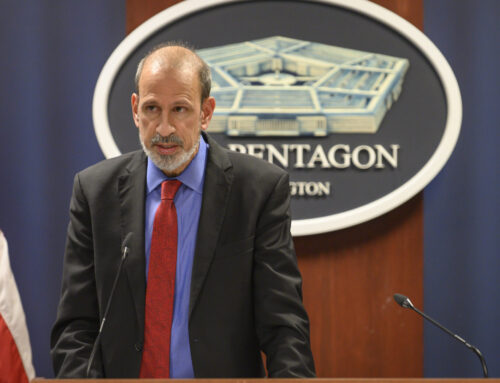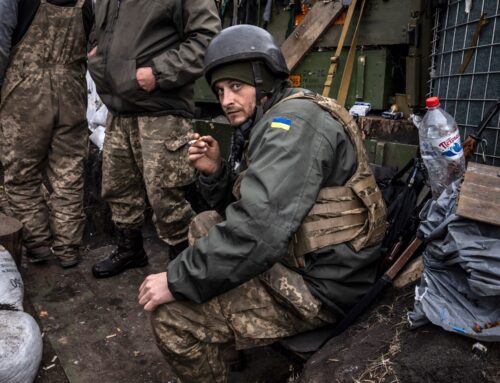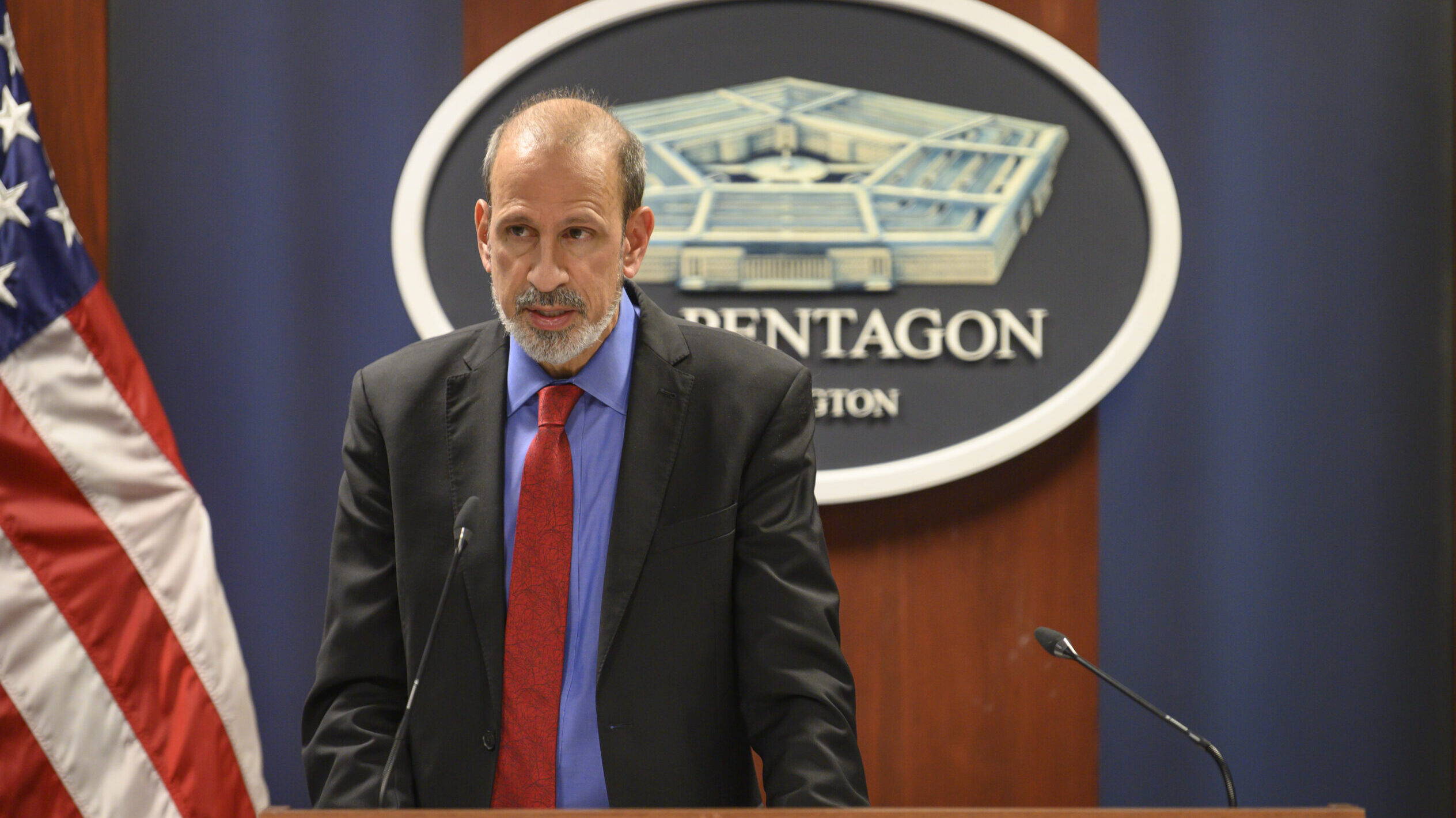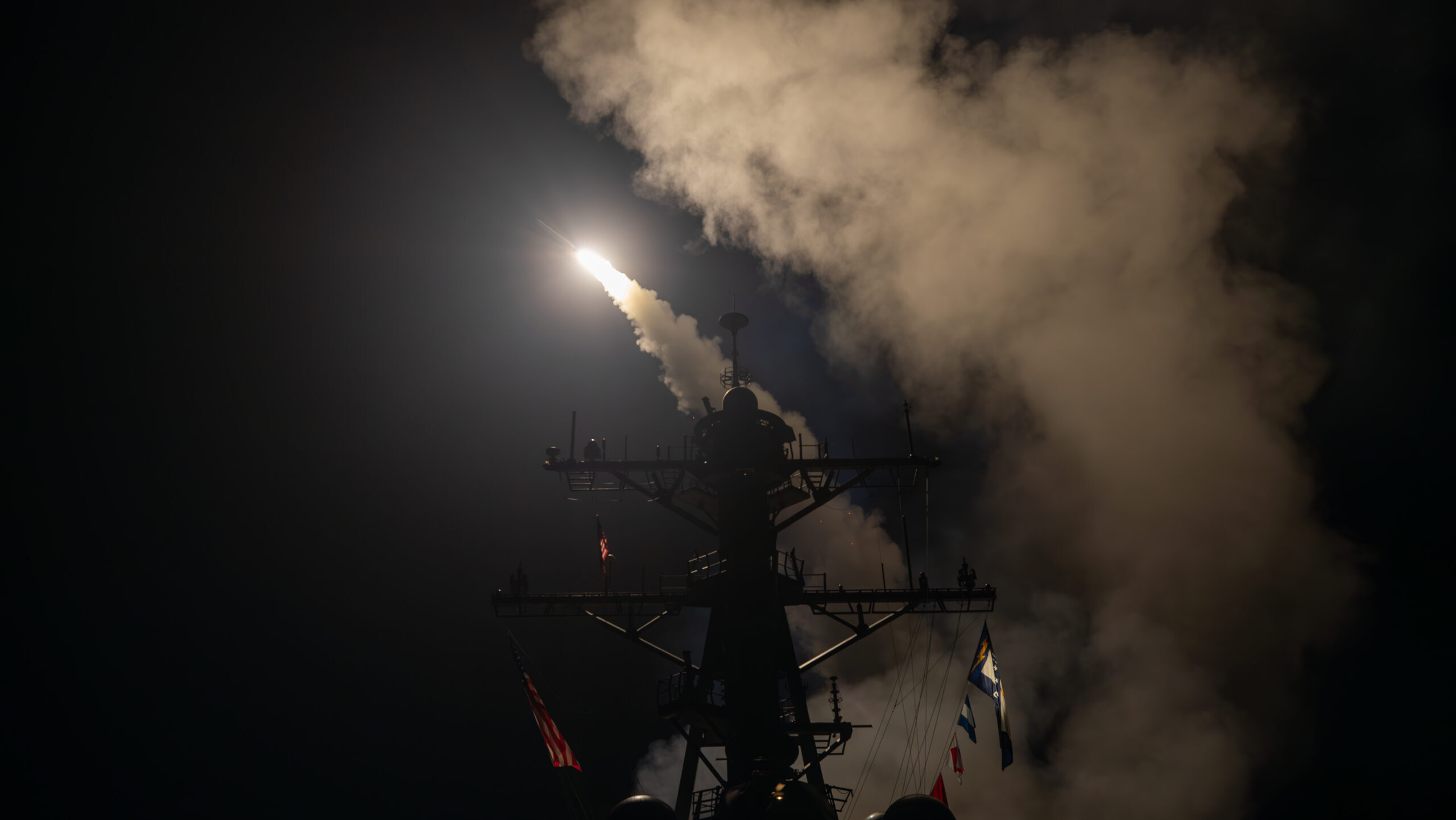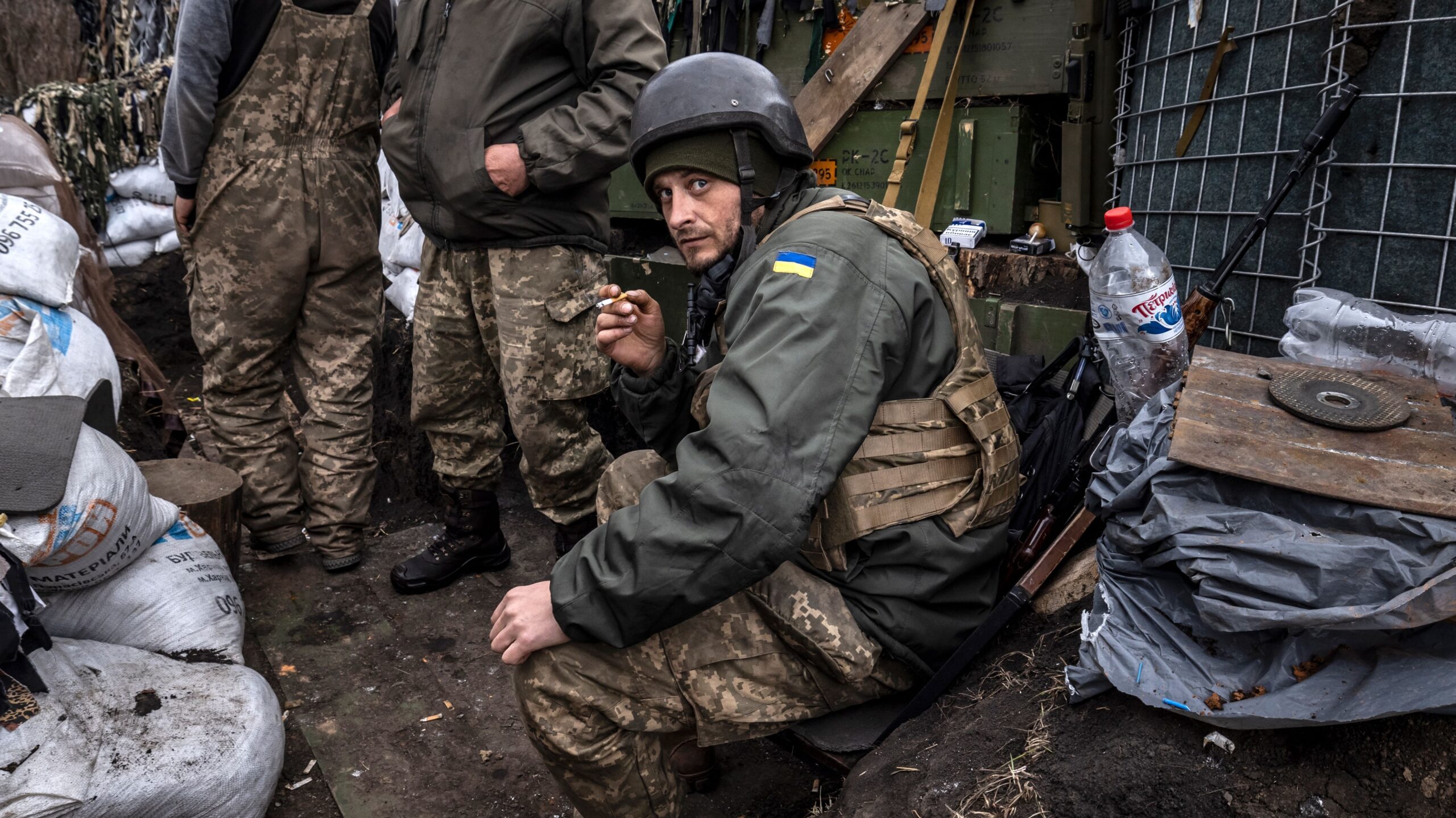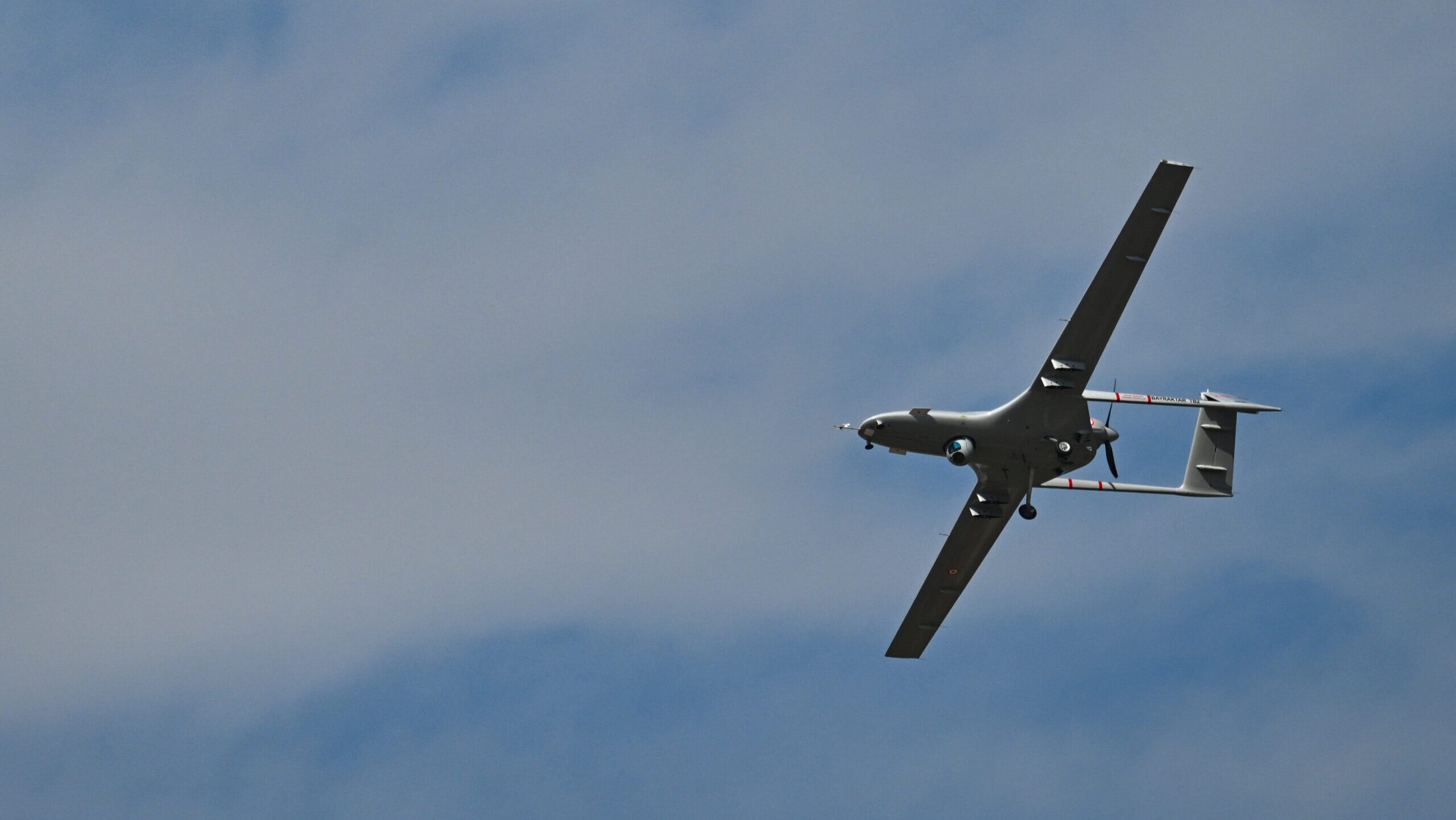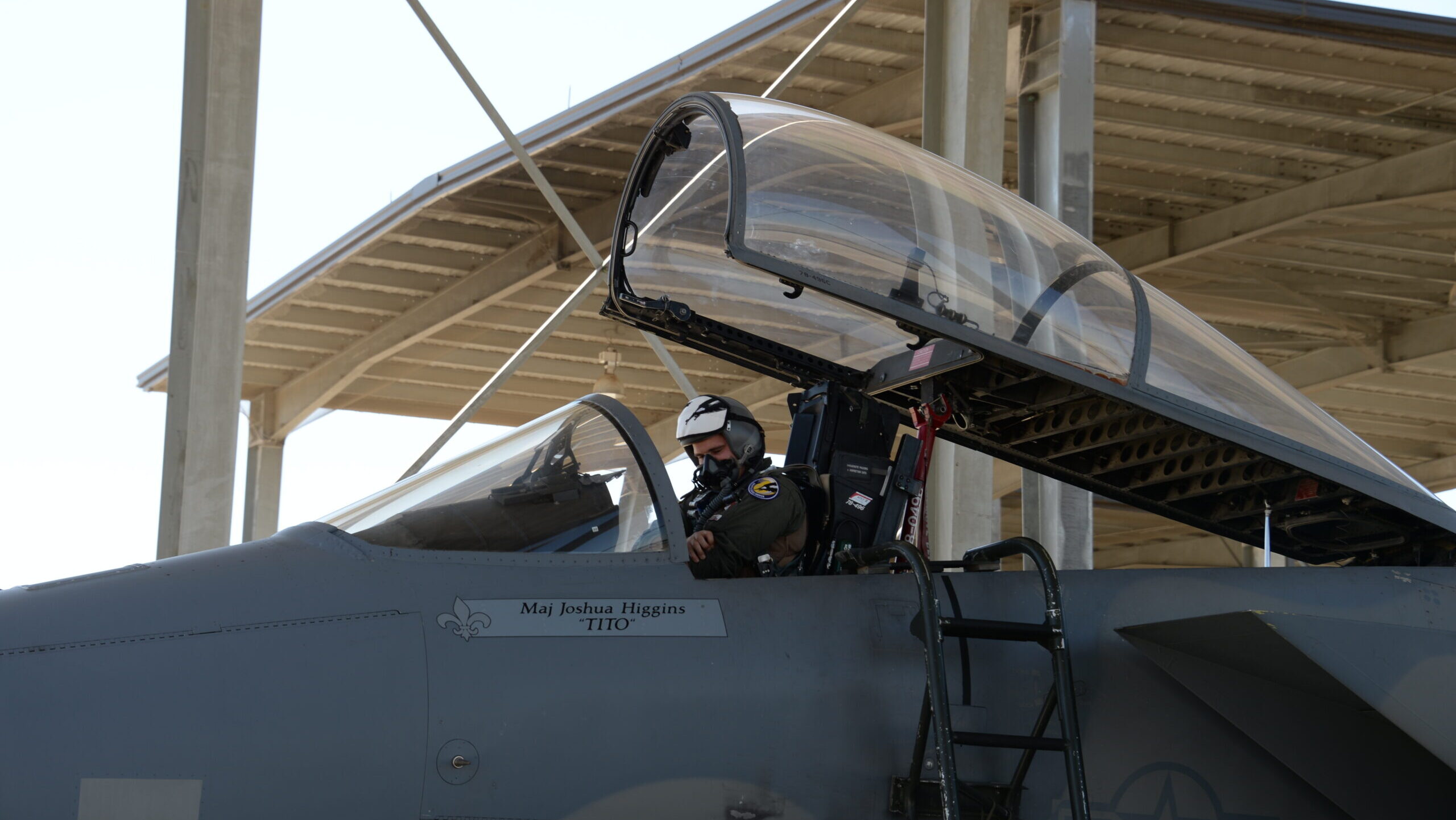U.S. Army Soldiers, assigned to 37th Infantry Brigade Combat Team, 125th Infantry Regiment, 1st Battalion, Combined Joint Task Force – Operation Inherent Resolve, board a CH-47 Chinook helicopter after a live-fire exercise at Al Asad Air Base, Iraq, July 7, 2023. (U.S. Army photo by Spc. Timothy VanDusen)
BEIRUT — The US formally announced today that the coalition mission in Iraq will come to a close in September 2025, but emphasized that troops will stay in country as part of an “evolution of the military mission in Iraq” and the counter-ISIS mission will continue.
“To be clear, the United States is not withdrawing from Iraq,” a senior administration official told reporters today. “We are moving towards the type of productive long-term security relationship that the United States has with partners around the world.”
The US and Iraq have agreed “on a two phase transition plan for operations in Iraq,” the official said. “In the first phase, we’ll be concluding the global coalition’s military mission in Iraq, the Combined Joint Task Force Inherent Resolve, and ending the presence of coalition forces in certain locations in Iraq as mutually determined.”
That phase will begin this month and finish by the end of September 2025.
The second phase involves an “understanding to allow the coalition to continue to support counter-ISIS operations in Syria from Iraq … until at least September 2026,” the official said.
“While ISIS is down, they are not out,” the official said. “ISIS continues to pose a real threat although diminished in Iraq and the wider region. Together the US, Iraq and the coalition remain committed to the defeat to defeat the core ISIS threat. We plan to continue focusing on that important task as we head into the future.”
The official did not say how many troops — US or coalition allies — would be leaving Iraq. Reuters previously reported that “hundreds of troops” would be leaving.
Though the announcement from Iraq marks a significant milestone in the long, contentious history of US-Iraqi relations, analyst Norman Ricklefs said it’s better described as a “drawdown” than a total “withdrawal.”
“It will be conditions-based, so that hopefully we will not see a disaster as we saw when troops completely withdrew in 2011 and left behind a security vacuum that was filled by ISIS,” Ricklefs, CEO of geopolitical consultancy firm NAMEA Group, told Breaking Defense ahead of today’s news.
Ricklefs said this time around Iraqi forces are “already very proficient, as we can see from the dramatic improvement in security in the major cities in the past few years. But the threat from a resurgent ISIS in Syria and rural areas of Iraq is still high, and Iraq will no doubt continue to benefit from US assistance in combating ISIS.”
Iraqi defense analyst Ahmad Al Sherifi agreed with Ricklefs that Iraq was better positioned to counter terrorism, at least on land, but he said aerial assets and more advanced tech like electronic warfare suites could be an issue.
A Decade of Operation Inherent Resolve
The US invaded Iraq on March 20, 2003 on a mission to oust strongman Saddam Hussein. After a string of successes in overwhelming Iraqi forces and dismantling the government — resulting in an infamous speech by then-President George W. Bush in front of a “Mission Accomplished” banner — the war devolved into a deadly, cumbersome fight against an violent insurgency while the US and its international partners struggled to reconstitute local governance.
After President Barack Obama came into the White House in 2009, he announced a pledge to withdraw combat brigades from Iraq, and by December 2011, the final US troops pulled out, as recalled in a Council on Foreign Relations timeline.
But that US withdrawal provided an opportunity for a terrorist group with its origins in an Iraqi al Qaeda offshoot, called the Islamic State in Iraq and Syria, or ISIS, to gain power and extend its reach across both countries. Stunning and brutal military campaigns, grotesque public videos of executions that included Western victims and high-profile terrorist attacks in the US and Europe prompted the US to lead another multi-national force back into Iraq in 2014, this time under the banner Operation Inherent Resolve.
Backed by thousands of airstrikes and leaning on local partners in Iraq, including Kurdish defense forces, the US-led coalition under Obama and then President Donald Trump managed to retake a vast majority of ISIS territory, kill its senior leadership and greatly reduce the terror threat posed from the group to the West. But US and international partner troops have remained in country in part ever since to ensure the terror threat does not rise again through continued operations. (Western troops have also become targets in Iraq and Syria not for ISIS but for Iran-backed Shi’a militias and, in one stunning case, Russian mercenaries.)
In its latest review of Operation Inherent Resolve [PDF], the Pentagon Inspector General highlighted remarks from the leader of the US-led coalition, who said that the conditions that led to ISIS’s rise in 2014 remained. As the analysts who spoke to Breaking Defense highlighted, US and Iraqi forces are likely betting that has changed Iraq’s capability to take on ISIS with less international help to lean on.
Ashley Roque and Lee Ferran contributed to this report.



